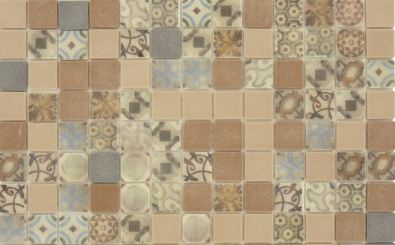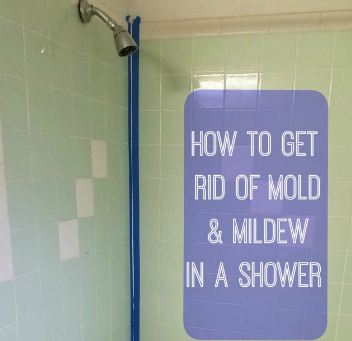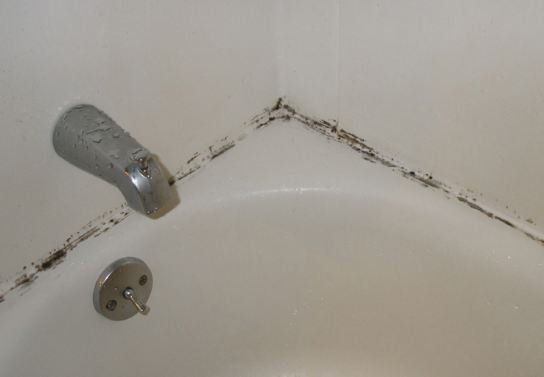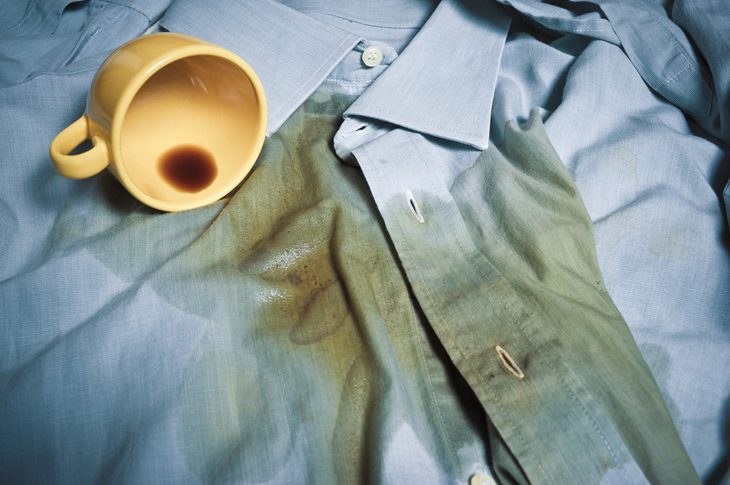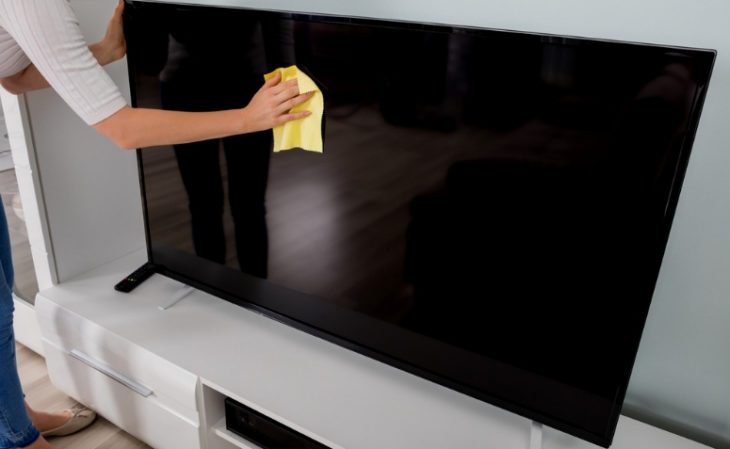Learning how to get mold off the wall is indispensable for anyone who is tired of suffering from this problem. Incidentally, cleaning does not always solve the issue and mold may eventually return. Why does this happen? How can you handle the issue without reforming? Is this possible or not? Today we have separated all these answers, as well as cleaning tips and how to take care of the structure of the house so that it does not suffer from moisture.

Learn how to get mold off the wall
Before learning how to remove mold from the wall you need to know a little more about this problem and the signs it presents at its different stages. Here\’s how to identify mold and when the problem can only be solved with a makeover. In addition, in each item, we separate a type of recipe to perform mold cleaning in its different stages of development.
1. How to identify mold
Mold is caused by fungal action, and its main source of spread is moisture – and understanding this before learning how to remove mold from the wall is important. Ricardo Faria, Vedacit\’s technical coordinator, explains how to identify the emergence of mold on the wall or ceiling. “They are characterized by black, gray or brown spots or dots that, if not removed, will continue to grow under the new coating, compromising the quality of the paint or finish.”
At the first signs, it is recommended that you make the following mixture. Add three glasses of water to a small amount of bleach, a substance that helps remove stain and smell. Ideally, use the packaging lid itself to measure and mix with water. That done, wipe it in place or use a scrubber.
2. The signs of mold
Cracks in paint, small green, black, and even gray spots are the first signs of the problem. Mold usually proliferates rapidly and within hours the stain can be much larger than the initial one. Mold is present in warm, humid, low-light environments such as pantries and bathrooms.
If you spot these stains and the wall peels, do not get wet, do not use the previous recipe. Ideally, lightly moisten the cloth and avoid ironing in areas where the paint is loose. Use your own alcohol vinegar here as it removes the smell and stain.
3. Mold on the tile
In tile itself, mold does not develop, but in regions of grout, it can be quite common. In such cases, it is normal for the bathroom, for example, to have those dark spots between the tiles. What to do in this case? There may actually be a lot of internal moisture that favors the emergence of mold. Or, the mold may be from the environment itself, as it naturally gets humid because it is a small, wet area and does not have much air circulation.
Whether you are going to build or renovate, here is a valuable tip from Ricardo. “Tiles or tiles are not used to prevent moisture. Waterproofing can have adhesion problems on the coatings. Ideally, the waterproofing should be done before the finishing step, except when the waterproofing itself can already be finished, as for example, in Vedatop Rodapé ”.
In the corners of the tile, the way is to use Cif Tira-Limo, specific product for the removal of mold in situations like this. Use a brush to pass the product through the spans.
4. Mold on the floor
Mold may also appear on the floor, especially if it is hardwood or carpet. In this case, only the bad smell will be a sign of this problem. Ideally, always lift the carpet during cleaning to check the floor conditions below. If you have mold problems, you need to find the real reason for the problem, which is usually the very moisture on the floor. In such cases, only good reform can solve.
If the spots have appeared, the way is to bet on cornstarch-based baby powder. You can place an amount, which varies with the size of the stain, where there is mold. In a matter of hours, the talcum powder will pull in moisture.
5. Mold on the ceiling
In the bathroom, mold is very common. Ricardo explains that this moisture can come from leaky plumbing, due to hot baths, where there is excess steam in the space with poor ventilation, and even in regions where there is a lot of air humidity. If the cause is discovered, the solution can be a simple cleanup or even a minor makeover.
Here, in this case of the bathroom, it is ideal to use a rough sponge which, together with the solution of bleach and normal water, will remove stains and smell.
6. How to remove mold from the wall
Some cleaning companies can help you learn how to remove mold from the wall. Usually, they use specific products that remove the stain as well as the smell. Ideally, you can even apply products that help prevent mold, but it depends largely on the cause of the problem, as in addition to moisture, other situations, such as pipe leaks, can cause mold to proliferate.
When mold is a big problem, the cleaning solution is to use specific products, such as Corta Mold Spray.
7. Products to be used
If you just choose to clean, here is our tip on how to remove mold from the wall. You can perform two types of solutions. The first recipe is to mix 240 ml of vinegar with 1 teaspoon of baking soda. Stir well and place in a spray bottle. Apply where there is mold and wait a few seconds. Then pass a sponge or cloth to remove the stain.
The other solution can be made with bleach. In this case, beware of the strong smell and also not to stain any nearby item, be it furniture or even your clothes. The ideal is to use 100 ml of bleach to one liter of water. The spray is also used to direct the substance to the stain. Wait a few seconds and do the same procedure as above.
8. How to avoid mold?
Moisture is the main cause of mold and the solution is to perform an efficient waterproofing to end the problem. As much as you clean or apply any specific product to remove stains, the reason for the problem will remain there.
Sure, applying tips on how to remove mold from the wall is effective, but it\’s a palliative solution. According to Ricardo Faria, it is initially possible to clean and disinfect the affected area. After drying, it is recommended to use specific waterproofing products to combat and protect the wall from moisture.
Another thing, let the environment well ventilated, let the air circulate around the house and especially in the room where there is more incidence of mold. This will help a lot!
9. When reform is inevitable to end mold
Mold can really be quite intense – to the point that no solution is as efficient as a good makeover. Now, how to identify whether or not to restructure that wall? Ricardo explains that some conditions are signs of this need. “You find the time to do the renovation when humidity and mold are usually in a process so severe that it compromises the resistance of the mortar, crumbling or peeling of the wall.”
10. Just painting doesn\’t solve the mold problem
There are people who, besides cleaning, decides to apply a coat of paint in that moldy environment. Does this really solve? The answer is no! “Waterproofing on the outside of the walls or slabs should be done to prevent water from entering your home,” says Ricardo.
When you do a makeover, then it is a good coat of paint. Remember that the construction market has grown a lot in recent years and several anti-mold products have been developed, including paints that protect the wall from moisture. If applied to waterproof plus a coat of paint for protection, surely mold will no longer be a problem in your home.
Mold is also a matter of… health!
It is no exaggeration to say that the health of a person living in a moldy environment is at risk. Incidentally, the emergence of these health problems may even vary depending on the type of mold that is in place.
The common diseases that arise from this kind of living are fungal sinusitis and respiratory intoxication. Some symptoms are common as well, such as frequent sneezing, chronic cough, and headache. Among the worst types of mold are those in which the spots are black.
Now that you know how to get mold off the wall, don\’t waste time. Check out our other organizing tips and keep your home clean at all times. Remember there is no better place in the world than our home!

